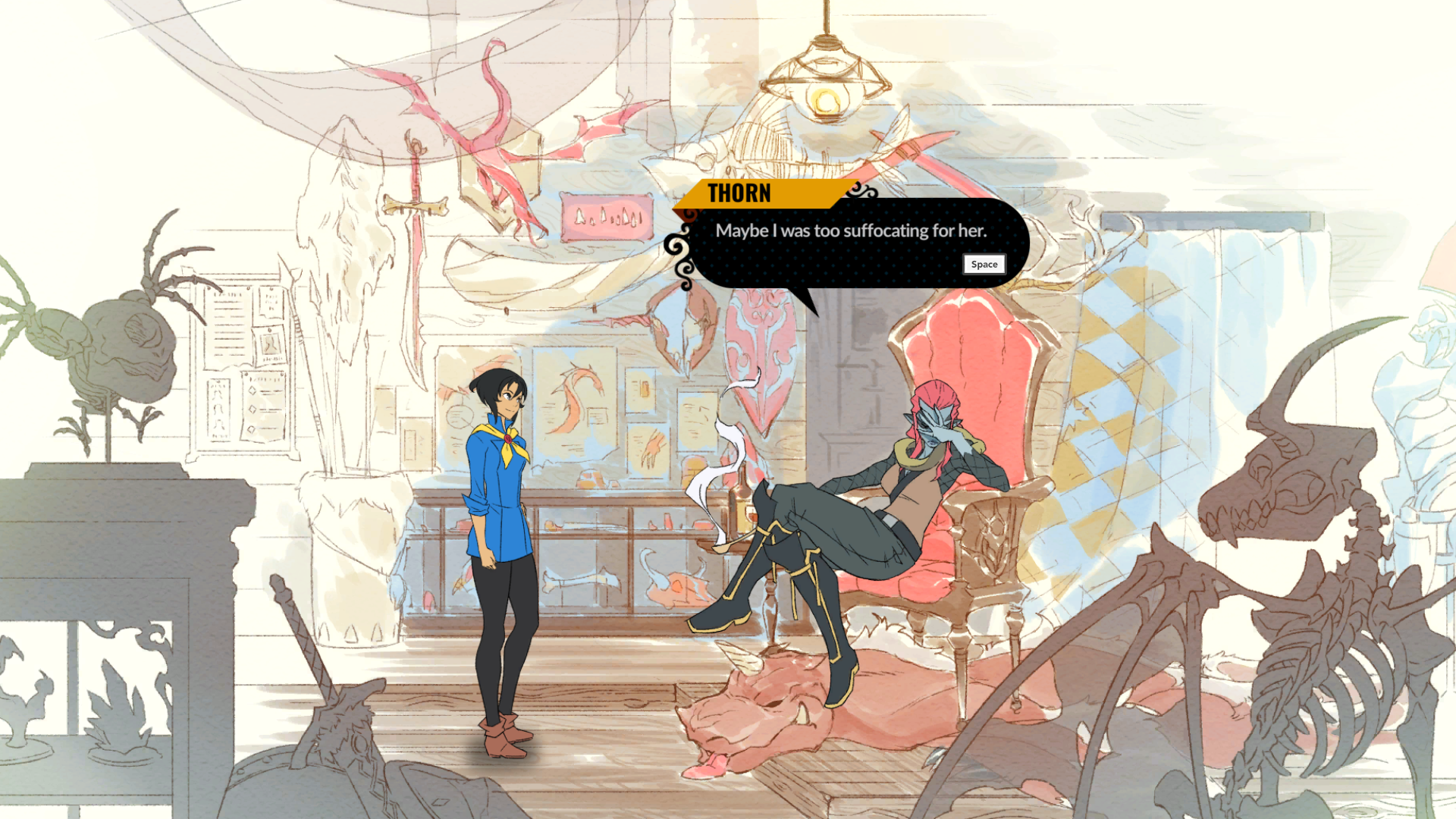At its core, Battle Chef Brigade is simple: beat up some monsters and use match-three magic to turn them into delicious meals. This simplicity is a great foundation, but it’s not what makes the game one of the best I’ve played this year. Everything that elevates it is instead a small detail; some element of zest that livens up the base.
A game about people
Every character in Battle Chef Brigade is lively and memorable. In his review, Josh called them two-dimensional, and while I somewhat agree, I think it matches the Saturday morning cartoon mood of the game. Like the basic gameplay, it gives a wholesome base that is built on by the character stereotypes themselves. It’s not everywhere that you find a hunter brooding over her ex-girlfriend; a jovial spirit necromancer; or a young woman with a robot tea kettle companion. So, while the game doesn’t stray too far from the beaten path, it puts a new spin on the classics.

One of my favourite moments in the game was one of these subtle moments of human story. Protagonist Mina can take work from Pontida, the upbeat restaurateur. There are hints that Pontida and a grumpy dwarf competitor, Cezar, may be interested in one another, and one day when Mina comes into work, she sees Cezar leaving the restaurant. Pontida seems particularly happy, and when Mina inquires into why, Pontida won’t say – and insists that this doesn’t mean she’ll let Mina slack off. But the puzzles on that particular day are suspiciously easy – customers only want two flavour gems matched, not four or six. Perhaps Pontida’s happiness is catching.
Artistic flair
Battle Chef Brigade is beautiful, there’s no two ways about it. And, despite its sketchy, half-finished style for backgrounds, there’s a wonderful attention to detail about the whole thing.
Take Mina’s family’s kitchen back home in Windy Village. At one point, Mina wonders idly about how her father’s potted plants are getting along – and there they are, trailing from the high shelves.

Just look how cute the King Bean is
A particular delight is how ingredients become meals during each cooking session. The game takes note of what you’re using and generates a meal description for you, and you can see it on the plate: a stuffed gourd, a turnip pastry, a noodle soup.
And this takes a hilarious turn when you don’t quite have time to cook something properly – if you serve a raw bird or a lone organ, the game will go ahead and display that. This is especially good when you’re serving three separate dishes to three judges – I can only imagine what the third judge thought when I served him a lonely bladder while his two coworkers got full meals.

There are a thousand other tiny touches that make Battle Chef Brigade as good as it is, and each is a dash of flavour in an otherwise simple, but wholesome meal.



